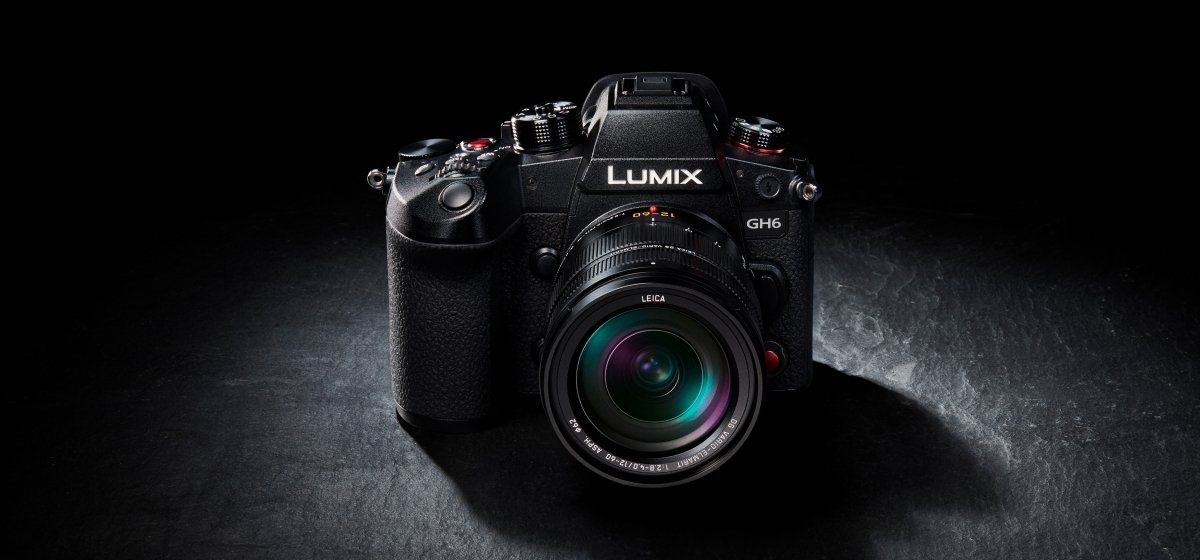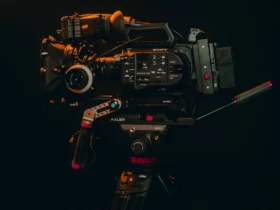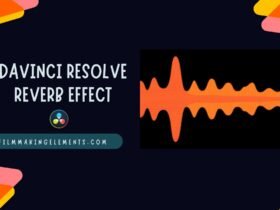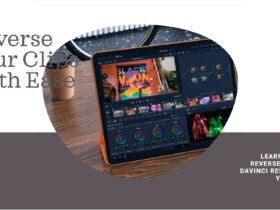Welcome back to FilmmakingElements.com, your ultimate destination for all things filmmaking! In today’s article, we are diving deep into the world of mirrorless cameras as we list the Top 3 Panasonic Lumix GH6 Alternatives.
The Panasonic Lumix GH6 has been a game-changer in the photography and videography industry, thanks to its incredible features, performance, and affordability. But we understand that every creative has unique preferences and requirements, which is why we’ve curated this list of exceptional alternatives that are on par with the Panasonic Lumix GH6 and may even surpass it in certain aspects. So, buckle up and get ready to explore these outstanding options that could be the perfect fit for your next project.
1. FUJIFILM X-T5

If you are looking for a mirrorless camera that can deliver high-quality stills and videos, you might be interested in the Panasonic Lumix GH6, a pro-level camera with a 25.2 MP Four Thirds sensor, 5-axis image stabilization, and 4K/60p video recording. However, the GH6 is not the only option in the market, and you might want to consider the FUJIFILM X-T5 as a good alternative, especially if you prefer a larger sensor, a more compact body, and a lower price. Here are some of the main differences between the FUJIFILM X-T5 and the Panasonic Lumix GH6:
- Sensor- Full frame or APSC The FUJIFILM X-T5 has a 40.2 MP APS-C sensor, which is larger than the GH6’s Four Thirds sensor. This means that the X-T5 can capture more light and detail, and produce images with less noise and better dynamic range. The X-T5 also has no anti-aliasing filter, which can enhance the sharpness and resolution of the images. However, the GH6 has a more advanced sensor design, with parallel readouts and anti-reflection coating, which can improve the speed and performance of the camera.
- Autofocus and Lens Mount Both cameras have hybrid autofocus systems, which use both phase-detection and contrast-detection points to achieve fast and accurate focus. The X-T5 has 425 selectable focus points, while the GH6 has 315. Both cameras also have face/eye/head/body/animal detection and tracking features, which can help you focus on your subjects in various situations. The X-T5 uses the FUJIFILM X mount, which has a wide range of lenses available, from primes to zooms, and from wide-angle to telephoto. The GH6 uses the Micro Four Thirds mount, which also has a large selection of lenses, but with a smaller size and weight.
- Design- Dimension and Weight Comparison The X-T5 is more compact and lighter than the GH6, making it easier to carry around and handle. The X-T5 measures 130 x 91 x 64 mm and weighs 557 g, while the GH6 measures 139 x 100 x 100 mm and weighs 823 g. The X-T5 also has a more retro and stylish design, with a magnesium alloy body and a leather-like texture. The GH6 has a more modern and professional look, with a built-in fan for unlimited recording and a weather-sealed body.
- Viewfinder and LCD monitor Both cameras have high-resolution electronic viewfinders, which can display various information and settings. The X-T5 has a 0.5-inch OLED EVF with 3.69 million dots and 1.2x magnification, while the GH6 has a 0.76-inch OLED EVF with 3.68 million dots and 0.76x magnification. The X-T5 also has a 3-inch tilting LCD monitor with 1.84 million dots and touch sensitivity, while the GH6 has a 3-inch fully articulated LCD monitor with 1.84 million dots and touch sensitivity. The GH6’s LCD monitor can be flipped to the side and rotated, which can be useful for vlogging and selfies.
- Battery life The X-T5 has a longer battery life than the GH6, according to the CIPA ratings. The X-T5 can take up to 580 shots per charge, while the GH6 can take up to 440 shots per charge. However, the GH6 has a USB-C port, which can be used for charging and power delivery, while the X-T5 has a USB 3.2 Gen 2 port, which can only be used for data transfer.
- Video Capabilities Both cameras are capable of recording high-quality videos, with various formats, frame rates, and bit rates. The GH6 has a slight edge over the X-T5 in terms of video resolution and features, as it can record up to 5.7K/60p, 4K/120p, and C4K/60p videos, with 10-bit 4:2:2 color depth and ALL-Intra compression. The X-T5 can record up to 5.8K/30p, 4K/60p, and C4K/60p videos, with 10-bit 4:2:2 color depth and LongGOP compression. The GH6 also has more video modes and functions, such as anamorphic mode, V-Log/V-Gamut, Dynamic Range Boost, waveform monitor, vector scope, and LUT display.
- Price The X-T5 is cheaper than the GH6, which can be a deciding factor for some buyers. The X-T5 has a suggested retail price of $1699 for the body only, while the GH6 has a suggested retail price of $2499 for the body only.
2. Canon EOS R6

Canon EOS R6 as a good alternative for Panasonic Lumix GH6
If you are looking for a hybrid mirrorless camera that can capture high-resolution stills and videos, you might be interested in the Panasonic Lumix GH6, a pro-level camera with a 25.2 MP Four Thirds sensor, 5-axis image stabilization, and 5.7K/60p video recording. However, the GH6 is not the only option in the market, and you might want to consider the Canon EOS R6 as a good alternative, especially if you prefer a larger sensor, a more compact body, and a longer battery life. Here are some of the main differences between the Canon EOS R6 and the Panasonic Lumix GH6:
- Sensor- Full frame or APSC The Canon EOS R6 has a 20.1 MP full-frame sensor, which is larger than the GH6’s Four Thirds sensor. This means that the R6 can capture more light and detail, and produce images with less noise and better dynamic range. The R6 also has no anti-aliasing filter, which can enhance the sharpness and resolution of the images. However, the GH6 has a more advanced sensor design, with parallel readouts and anti-reflection coating, which can improve the speed and performance of the camera.
- Autofocus and Lens Mount Both cameras have hybrid autofocus systems, which use both phase-detection and contrast-detection points to achieve fast and accurate focus. The R6 has 1053 selectable focus points, while the GH6 has 315. Both cameras also have face/eye/head/body/animal detection and tracking features, which can help you focus on your subjects in various situations. The R6 uses the Canon RF mount, which has a wide range of lenses available, from primes to zooms, and from wide-angle to telephoto. The GH6 uses the Micro Four Thirds mount, which also has a large selection of lenses, but with a smaller size and weight.
- Design- Dimension and Weight Comparison The R6 is more compact and lighter than the GH6, making it easier to carry around and handle. The R6 measures 138 x 98 x 88 mm and weighs 680 g, while the GH6 measures 139 x 100 x 100 mm and weighs 823 g. The R6 also has a more retro and stylish design, with a magnesium alloy body and a leather-like texture. The GH6 has a more modern and professional look, with a built-in fan for unlimited recording and a weather-sealed body.
- Viewfinder and LCD monitor Both cameras have high-resolution electronic viewfinders, which can display various information and settings. The R6 has a 0.5-inch OLED EVF with 3.69 million dots and 0.76x magnification, while the GH6 has a 0.76-inch OLED EVF with 3.68 million dots and 0.76x magnification. The R6 also has a 3-inch tilting LCD monitor with 1.62 million dots and touch sensitivity, while the GH6 has a 3-inch fully articulated LCD monitor with 1.84 million dots and touch sensitivity. The GH6’s LCD monitor can be flipped to the side and rotated, which can be useful for vlogging and selfies.
- Battery life The R6 has a longer battery life than the GH6, according to the CIPA ratings. The R6 can take up to 360 shots per charge, while the GH6 can take up to 440 shots per charge. However, the GH6 has a USB-C port, which can be used for charging and power delivery, while the R6 has a USB 3.2 Gen 2 port, which can only be used for data transfer.
- Video Capabilities Both cameras are capable of recording high-quality videos, with various formats, frame rates, and bit rates. The GH6 has a slight edge over the R6 in terms of video resolution and features, as it can record up to 5.7K/60p, 4K/120p, and C4K/60p videos, with 10-bit 4:2:2 color depth and ALL-Intra compression. The R6 can record up to 4K/60p and C4K/60p videos, with 10-bit 4:2:2 color depth and LongGOP compression. The GH6 also has more video modes and functions, such as anamorphic mode, V-Log/V-Gamut, Dynamic Range Boost, waveform monitor, vector scope, and LUT display.
- Price The R6 is cheaper than the GH6, which can be a deciding factor for some buyers. The R6 has a suggested retail price of $1699 for the body only, while the GH6 has a suggested retail price of $2499 for the body only.
3. Nikon Z6 II

Nikon Z6 II as a good alternative for Panasonic Lumix GH6. Here are some of the main differences between the Nikon Z6 II and the Panasonic Lumix GH6:
- Sensor- Full frame or APSC The Nikon Z6 II has a 24.5 MP full-frame sensor, which is larger than the GH6’s Four Thirds sensor. This means that the Z6 II can capture more light and detail, and produce images with less noise and better dynamic range. The Z6 II also has no anti-aliasing filter, which can enhance the sharpness and resolution of the images. However, the GH6 has a more advanced sensor design, with parallel readouts and anti-reflection coating, which can improve the speed and performance of the camera.
- Autofocus and Lens Mount Both cameras have hybrid autofocus systems, which use both phase-detection and contrast-detection points to achieve fast and accurate focus. The Z6 II has 273 selectable focus points, while the GH6 has 315. Both cameras also have face/eye/head/body/animal detection and tracking features, which can help you focus on your subjects in various situations. The Z6 II uses the Nikon Z mount, which has a wide range of lenses available, from primes to zooms, and from wide-angle to telephoto. The GH6 uses the Micro Four Thirds mount, which also has a large selection of lenses, but with a smaller size and weight.
- Design- Dimension and Weight Comparison The Z6 II is more compact and lighter than the GH6, making it easier to carry around and handle. The Z6 II measures 134 x 101 x 70 mm and weighs 705 g, while the GH6 measures 139 x 100 x 100 mm and weighs 823 g. The Z6 II also has a more retro and stylish design, with a magnesium alloy body and a leather-like texture. The GH6 has a more modern and professional look, with a built-in fan for unlimited recording and a weather-sealed body.
- Viewfinder and LCD monitor Both cameras have high-resolution electronic viewfinders, which can display various information and settings. The Z6 II has a 0.5-inch OLED EVF with 3.69 million dots and 0.8x magnification, while the GH6 has a 0.76-inch OLED EVF with 3.68 million dots and 0.76x magnification. The Z6 II also has a 3.2-inch tilting LCD monitor with 2.1 million dots and touch sensitivity, while the GH6 has a 3-inch fully articulated LCD monitor with 1.84 million dots and touch sensitivity. The GH6’s LCD monitor can be flipped to the side and rotated, which can be useful for vlogging and selfies.
- Battery life The Z6 II has a longer battery life than the GH6, according to the CIPA ratings. The Z6 II can take up to 410 shots per charge, while the GH6 can take up to 360 shots per charge. However, the GH6 has a USB-C port, which can be used for charging and power delivery, while the Z6 II has a USB 3.2 Gen 1 port, which can only be used for data transfer.
- Video Capabilities Both cameras are capable of recording high-quality videos, with various formats, frame rates, and bit rates. The GH6 has a slight edge over the Z6 II in terms of video resolution and features, as it can record up to 5.7K/60p, 4K/120p, and C4K/60p videos, with 10-bit 4:2:2 color depth and ALL-Intra compression. The Z6 II can record up to 4K/60p and C4K/60p videos, with 10-bit 4:2:2 color depth and LongGOP compression. The GH6 also has more video modes and functions, such as anamorphic mode, V-Log/V-Gamut, Dynamic Range Boost, waveform monitor, vector scope, and LUT display.
- Price The Z6 II is cheaper than the GH6, which can be a deciding factor for some buyers. The Z6 II has a suggested retail price of $1699 for the body only, while the GH6 has a suggested retail price of $2499 for the body only.











Got a Question?
Find us on Socials or Contact us and we’ll get back to you as soon as possible.